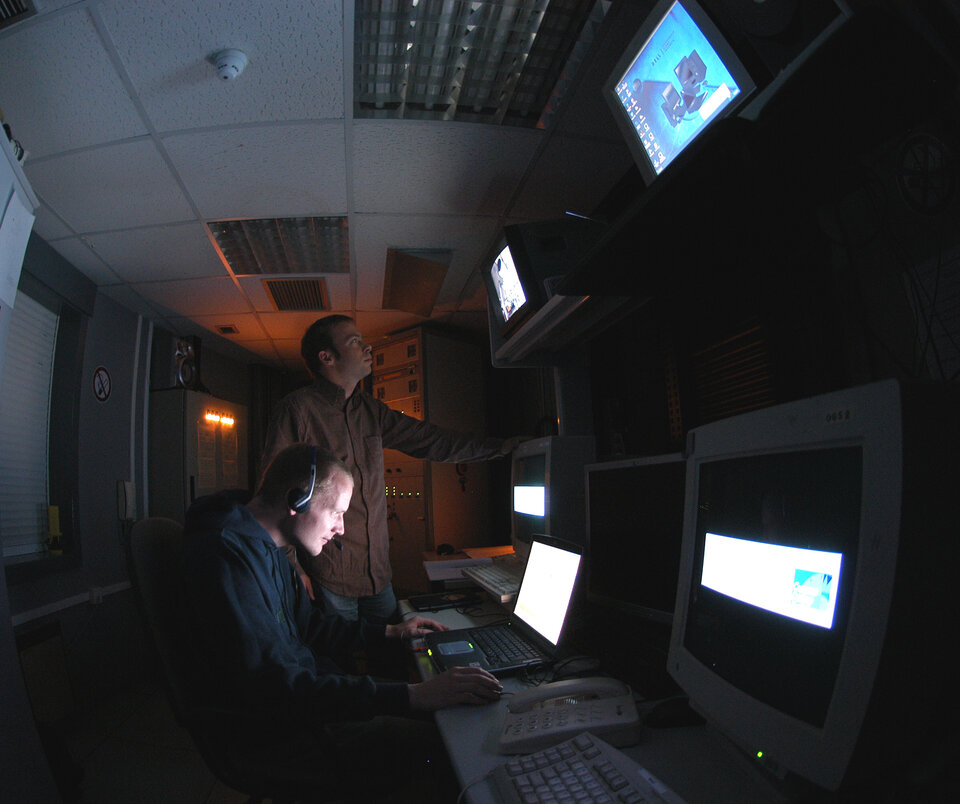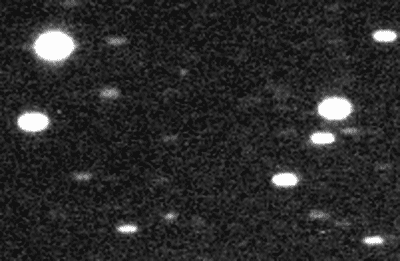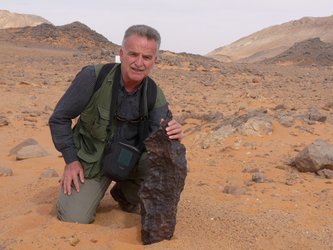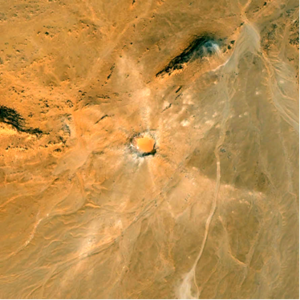Amateur skywatchers help space hazards team
For the first time, observations coordinated by ESA's space hazards team have found an asteroid that comes close enough to Earth to pose an impact threat. The space rock was found by amateur astronomers, highlighting the value of 'crowd-sourcing' to science and planetary defence.
The discovery of asteroid 2011 SF108 was made by the volunteer Teide Observatory Tenerife Asteroid Survey (TOTAS) team during an observation slot sponsored by ESA's Space Situational Awareness (SSA) programme in September.
The four-night survey used the 1m-aperture telescope at ESA's Optical Ground Station at Teide on Tenerife in the Canary Islands.
This is not the first asteroid found under SSA sponsorship, but it is the first that qualifies as a 'near Earth object' – an object that passes close enough to Earth during its orbit around the Sun that it could pose an impact threat.
Images require human evaluation
During TOTAS observations, the telescope runs automated asteroid surveys for several hours using software developed by amateur astronomer and computer scientist Matthias Busch from the Starkenburg Amateur Observatory in Heppenheim, Germany.
However, potential sightings must still be evaluated by humans.
The team comprises 20 volunteers, most of whom took part in the manual evaluation of images captured during the session on 28/29 September.
Safe distance: 30 million km

"Images are distributed to the entire team for review, and any one of them could be the discoverer of a new asteroid," says Detlef Koschny, Head of NEO activity for SSA. "This time, the luck of the draw fell to Rainer Kracht."
"As volunteer work, it is very rewarding. When you do spot something, you contribute to Europe's efforts in defending against asteroid hazards."
The orbit of asteroid 2011 SF108 brings it no closer than about 30 million km to Earth – a safe distance.
When you do spot something, you contribute to Europe's efforts in defending against asteroid hazards.
The object is the 46th asteroid discovered by Mr Kracht, a retired school teacher who lives in Elmshorn, near Hamburg, Germany. "Eight of us reviewed images on the night of the discovery, and I was lucky to be the one who found 2011 SF108 as part of this team," says Mr Kracht.
"The discovery was only possible with the excellent software developed by Matthias Busch, who also spotted this object in the images on the second night and sent the observations to the Minor Planet Center."
To date, some 8000 NEOs have been discovered worldwide but many thousands more are suspected to exist, particularly in the size of metres to hundreds of metres. It is important to find and track these to determine if any pose an impact threat to Earth.
Amateur TOTAS team lays foundation

TOTAS is helping to lay the foundation for a future European asteroid survey as part of the full SSA programme, which is to be decided in 2012.
Such a survey would use multiple 1m telescopes to scan the complete sky every night, a much larger effort than at present, and is expected to discover several NEOs per week. It would use a mix of professional and 'crowd-sourced' astronomers.
Currently, professional asteroid surveys are performed only in the USA. The only significant asteroid survey in Europe now is the La Sagra Sky Survey, undertaken by amateur astronomers in southern Spain.
Asteroid search
TOTAS is helping to lay the foundation for a future European asteroid survey as part of the full SSA programme, which is to be decided in 2012.
Such a survey would use multiple 1 m telescopes to scan the complete sky every night, a much larger effort than at present, and is expected to discover several NEOs per week. It would use a mix of professional and 'crowd-sourced' astronomers.
Currently, professional asteroid surveys are performed only in the USA. The only significant asteroid survey in Europe now is the La Sagra Sky Survey, undertaken by amateur astronomers in southern Spain.
TOTAS racks up impressive results
Since starting their SSA-sponsored survey work in January 2010, the TOTAS team has identified nearly 400 candidate asteroids; 20 have been confirmed and numbered. Over 8000 others have been seen and confirmed as previously catalogued objects.
For ESA's SSA office, the main aim of the observing programme is to gain experience in techniques for detecting NEOs.
The surveys use the telescope mainly for performing 'follow-up' observations of recently discovered asteroids, which are announced on behalf of astronomers worldwide by the US-based Minor Planet Center.
Amateurs make professional contributions
The story of how 2011 SF108 was discovered and confirmed illustrates the crucial importance of amateur astronomers to Europe's asteroid survey efforts.
The automated sky-scan software was first customised to work with the Optical Ground Station (OGS) telescope by Matthias Busch of the Starkenburg Observatory in 2009.
This came about after a chance opportunity to use the telescope together with another amateur, Rainer Kresken, who had learned about the SSA programme's plans to start sky surveys at his day job – as a flight dynamics engineer at the European Space Operations Centre, Darmstadt.
It was agreed that the amateurs could use the OGS telescope in exchange for taking part in the nascent SSA–NEO survey.
The exchange was later expanded to include other keen amateurs from Starkenburg, giving birth to the TOTAS team.
TOTAS has so far accumulated about 120 hours of observing time, and slots are now allocated about once per month, for three or four nights.
On a typical night, the telescope conducts a survey lasting several hours, generating a large amount of image data. Mr Busch's processing software then analyses the images and flags any moving objects – indicating a potential asteroid.
The flagged data are then distributed electronically to the TOTAS team, who examine the original images on their computer screens and decide whether the flagged objects are real or just noise.
This is how Mr Kracht, who has also discovered a large number of comets in images acquired by the ESA/NASA SOHO spacecraft, came to his lucky find last month.
The find was submitted to the Minor Planet Center, and a preliminary orbit computation marked the object as a possible NEO.
To confirm the find, Mr Busch manually checked the survey images from a second night and found the object again. Only after a manual measurement on a third night could the orbit of the object be determined accurately enough to confirm the object was indeed an NEO.
"It was really an exciting moment when I saw 'our' asteroid appearing on my computer screen. It confirms the excellent quality of work done by the entire TOTAS team," says ESA's Detlef Koschny, who conducted the confirmation check on the third night.
Volunteer work not always so exciting
Most of the observing time at the OGS telescope is allocated to confirming known NEOs. Precise repeated observations are needed to characterise an asteroid's orbit fully to determine that it will not pass too close to Earth. As future observations provide better orbit determinations, the impact risk from any particularly NEO can change.
The object with, currently, the highest risk of hitting Earth is asteroid 2011 SG68, which ESA's telescope observed in the September 2011 TOTAS observation slot.
Risk computations are done in Europe by the Near Earth Object Dynamics Site (NEODyS) in Pisa, Italy, which is now being integrated into ESA's SSA precursor services.
Similarly, the Spaceguard Central Node, operated by Italy's National Institute of Astrophysics in Rome, maintains a list of objects that must be observed again urgently in order to confirm their orbits.
The DLR German Aerospace Center in Berlin maintains a Solar System database listing physical properties of asteroids, the European Asteroid Research Network. Both of these are currently being integrated into the SSA–NEO portfolio of services.











